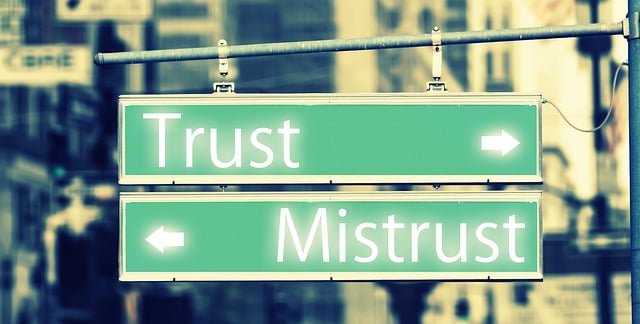
In an era of instant information, the media, whether mainstream or niche, is increasingly plagued by misinformation. As a result, the people’s trust in what they read and see is declining.
The causes range from the relentless pursuit of traffic to outright political or financial agendas.
The problem is not just the proliferation of falsehoods but also the ease with which they spread, often without scrutiny.
How Misinformation is Spread in the Mainstream Media
Click baits – Speed Over Accuracy
Modern media organizations prioritize engagement metrics—clicks, views, and shares—over accuracy.
In the rush to break news first, fact-checking is often sidelined.
Sensationalism sells, and misleading headlines drive more traffic than nuanced, factual reporting.
This model encourages exaggerated or misleading narratives, sometimes outright fabrications, to capture audience attention.
Take, for instance, the Covington Catholic School incident in 2019. A viral clip showed a confrontation between a Native American activist and a group of high school students wearing MAGA hats. Major outlets quickly framed the students as aggressors. However, extended footage later revealed that they had been provoked, and the the actual situation was actually the opposite of what was portrayed.
Similarly, the persecution of the January 6, 2020 Capitol Hill protestors as an insurrection was a false narrative that ruined thousands of lives. There may have been a few criminals in that crowd, but the broad brush applied to the everyone who was there was a black mark on the American media and politics. In fact, even today, major media outlets such as CNN continue to willingly spread falsehoods that question their journalistic integrity. The Democrat political party joining in to go after Donald Trump, their primary challenger in the elections of Nov 2024, was an even bigger stain on American politics.
The rush to publish a politically convenient narrative overruled journalistic diligence.
Lazy Journalism
A significant portion of today’s news is not independently verified but simply aggregated from other sources.
Journalists, under pressure to churn out content, often rehash reports from competitors without verifying facts. This chain reaction amplifies misinformation.
A notable case is the recent Trump-Zelenskyy meeting in the White House on Feb 28. Almost all major media outlets selectively reported only the last 10 minutes of the conversation, implying an improper quid pro quo. However, a fuller transcript showed a broader discussion that provided a completely different context where Trump offered everything possible (arms, funds, peacekeeping force) and Zelenskyy kept pushing back.
The omission resulted in an outright fabrication of a false narrative. It shaped public perception in a misleading way and caused division where there should have been none.
Vested Political and Social Agendas
Media organizations are not just passive observers; people are human and often have explicit biases that shape how stories are told.
A failure of of strong editorial Many outlets have clear ideological leanings, and their reporting reflects those false positions.
When government efficiency efforts, such as streamlining regulations and reducing costs, are labeled as “fascism,” it reflects a predetermined narrative rather than objective reporting.
The maligning of Elon Musk, Jeff Bezos, and JK Rowling, some of the greatest liberal thinkers of our time, is simply shocking to witness.
Similarly, coverage of international conflicts frequently falls victim to ideological filtering. Major Western media outlets justified Hamas terrorism by framing cold blooded attacks on civilians as “resistance” while minimizing or omitting the group’s designation as a terrorist organization by multiple governments.
The selective use of language plays a crucial role in shaping public perception.
The Consequences of Misinformation
Once misinformation enters the mainstream, it is difficult to correct. Retractions and corrections rarely receive the same level of attention as the original falsehood.
Especially when the false narratives are driven by mainstream media, it creates a cycle where inaccuracies persist in public discourse, influencing opinions long after they have been debunked.
Misinformation erodes public trust in the media. It deepens political divides, fuels social unrest, and undermines democratic discourse.
When the public cannot rely on the press for accurate reporting, conspiracy theories and alternative media sources—some of which are equally unreliable—gain traction.
How to Counter Misinformation
While misinformation is widespread, individuals can take proactive steps to filter out falsehoods and form well-informed opinions.
1. Go to the Original Source
News articles often rely on press releases, reports, or direct statements from officials. Instead of relying solely on a journalist’s interpretation, seek out the full transcripts, official documents, or direct videos of statements. This can help cut through selective editing or biased framing.
Example: In the Trump-Zelenskyy case, instead of relying on media reports, reading the entire transcript provided crucial context that changed the narrative.
2. Read News from Multiple Sources
Every outlet has biases, whether explicit or subtle. Comparing coverage of the same event from different sources—left-leaning, right-leaning, and centrist—allows for a more comprehensive understanding.
Example: When the Covington Catholic story first broke, conservative outlets called for patience, while many mainstream sources ran with the misleading initial framing. A broader media diet would have signaled the need to wait for more information.
3. Ask: Why Was This Article Written?
Before accepting a story at face value, ask yourself:
- What is the intended message?
- Does this fit too neatly into a political or social agenda?
- Are key facts omitted or overly emphasized?
If a report feels designed to provoke an emotional reaction rather than inform, it’s worth taking a step back.
Example: When government efficiency efforts were portrayed as “fascism,” it was essential to question whether this was an objective analysis or an attempt to shape public opinion negatively.
4. Be Wary of Outrage-Driven Narratives
Many misleading stories are designed to provoke anger or moral outrage, which drives engagement. If a headline or viral clip seems too perfect for a political narrative, take the time to verify its accuracy.
Example: Selectively edited videos of conflicts, protests such as the J6 Capitol Hill protest, or political speeches often remove crucial context to paint a misleading picture.
Always look for the full, unedited version.
5. Check Retractions and Corrections
Media outlets occasionally issue corrections, but they are often buried and receive far less attention than the original misinformation.
A quick search for “[story] retraction” or “[story] correction” can sometimes reveal crucial updates.
Example: Several outlets later corrected their Covington Catholic reporting, but by that point, the damage to the students’ reputations had already been done.
Can the Trend Be Reversed?
The solution to falsehoods in the mainstream media is not censorship but accountability.
Media organizations must prioritize fact-checking over speed, reject lazy journalism, and acknowledge their biases.
Readers must also cultivate critical thinking skills, seeking multiple sources before forming opinions.
Until then, misinformation will remain an unavoidable feature of modern media.



